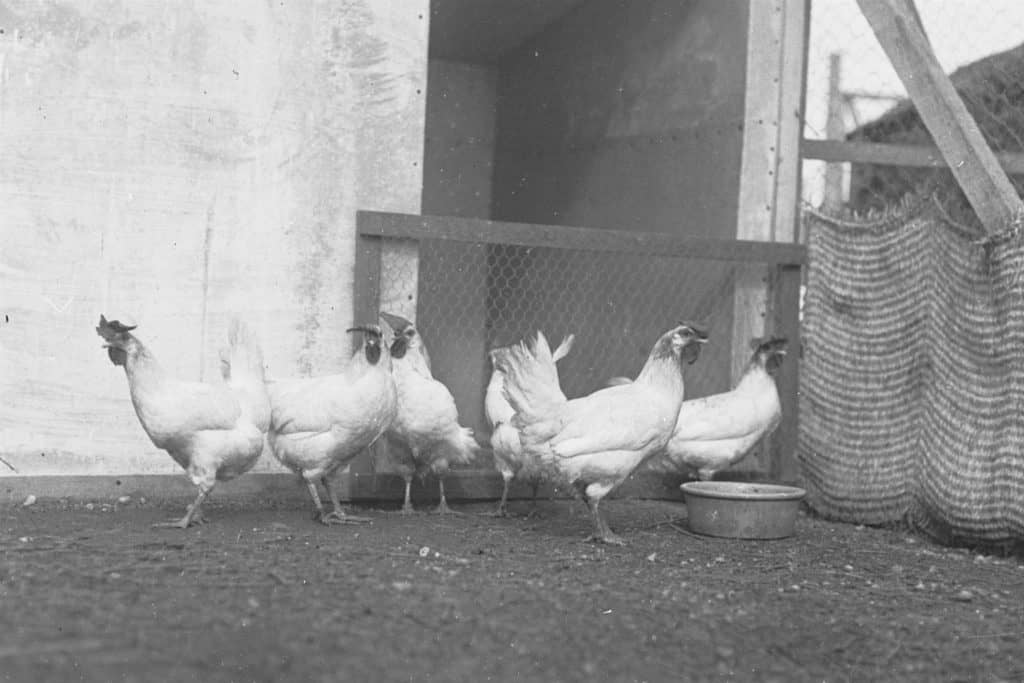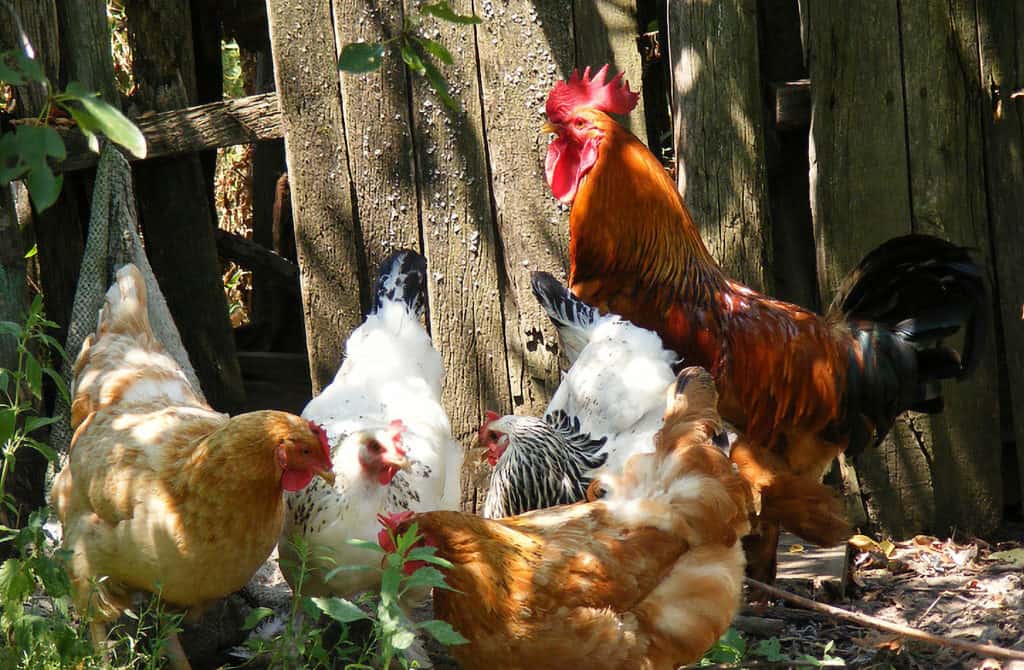You may have been, at some point in your life, a part of the classic debate, “Which came first, the chicken or the egg?” Hearing it the first time, for sure, made you so curious about which is which. But have you ever been curious about the history of chickens — how these and their eggs ended up in our dinner plates?
Chickens Around the World
Chickens take up a large portion of the domestic fowl count in the world. The recent update from Statistica shows that “the number of chickens worldwide has more than doubled since 1990. In 2023, there were over 33 billion chickens in the world, up from 23.7 billion chickens in 2018. Let’s do a quick run of the history of chickens — how come they’re this many?
The known primary progenitor of the domestic chicken is the Red Junglefowl. Some have suggested that the three closely related Junglefowl species have possible genetic contributions, too. They are the earliest domesticated chickens going back at least 7,600 years. The Department of Agriculture refers to the Red Junglefowl as Gallus gallus domesticus.
They were first kept by humans originally for cockfighting, a popular ritual for fertility in Southeast Asia, and in some way involving a keen gambling element. Chickens were merely pets until the arrival of the Hellenistic Period, which was around the 4th to 2nd centuries BC. The ancients mostly kept chickens for the production of their consumable meats and eggs.
An article by Australian anthropologist Alice Storey shows studies of finding out where the chicken started and how they were able to roam the globe. The chicken’s cultural and religious significance played a unique role in their global distribution. This primary significance resulted in a drastic dispersal of early descendants that lasted for at least 2000 glorious years.
However, unlike sea turtles, chickens are not migratory by nature. They have weak flight capabilities and a limited home range. They are not the best swimmers around, making them such an easy catch. Thus, showing a bright display of the substantial involvement of humans in the history of chickens’ global distribution.
Genetic studies resulted in multiple maternal origins in Southeast Asia and East Asia, but actively originating in the Indian subcontinent. From the Indus Valley, the history of chickens continued to spread along China and the Middle East.
The Romans started bringing them to battles to envisage military victories. The Romans’ expansion of their empires resulted in secondary and tertiary distributions of domestic plants and animals. The trade and exchange markets included chicks during colonization.
Chickens: A Unique Species

In the early 20th century, the history of chickens contributed to biological research. A chicken grazing in the wild can live up to 30 years. The average chicken has a round, squat appearance, is 27.6 inches tall, and weighs an average of 5.7 pounds. The species of fowl have long arched tails, fleshy combs, and wattles underneath their bills. A stout rooster can have a tail that stretches out to 12 inches.
A healthy hen can produce up to 300 eggs per year with natural and artificial sunlight. Poultry mating season occurs during the spring and the summer. Ovulation and egg production cycles take 23 to 26 hours.
Fertilized eggs hatch in 21 days. A supple hen will lay eggs two to three years for farm production before being slaughtered for fresh meat. Free-range chickens can roam a farm for six to eight years.
Within a flock of chickens, there is a social hierarchy. The brood has a dominant male chicken, called a rooster or a cock, and a few subordinate roosters who watch over the flock.
The highest order of hens also watches over the other subordinate chickens to ensure survival of the brood. The hens are responsible for making sure there are enough food and access to water for the entire flock.
Sometimes within the brood, the pecking order gets out of hand. When things get out of order, the offspring will fight with their beaks, pummel with their wings, and fight each other.
Hens are not ready to assert any type of domination until the 10th week of life. Hence, chickens endure separation based upon their sex. These altercations can lead to death. Adult roosters will fight within the brood for the domination of the species.
Chickens on the Market: Hen Fever
In the mid-15th century BC, the annals of Ancient Egyptian King Thutmose III introduced chickens as a “bird that gives birth every day.” Not knowing that it was where the next great history of chickens began.
Naturally, when a hen incubates eggs, she will need to stop laying new ones and brood six or more eggs for three weeks. It takes that long for the hen to produce eggs before, as to why Egyptians learned to develop artificial incubation. All they need to do is to put the eggs in baskets and place them over hot ashes; the eggs will naturally incubate for 21 days.
The incubation period opened the door for hens to continue laying eggs daily. Thus, resulting in the rapid production of what used to be a kingly delicacy or a sacred offering to a commoner’s meal.
At the same time, when the Egyptians developed artificial incubation, the history of chickens in Europe continued to progress. The Phoenicians brought chickens from their home and scattered them throughout the West colonies. This settlement, henceforth, introduced chickens as an essential part of the European livestock.

After a few centuries, chickens are being brought along by humans whenever they went, spreading them out through conquest and commerce. In the 1840s, shortly after the Opium Wars, the most curious craze in the history of chickens began.
Chinese breeds arrived in England, and they encountered the local chickens. This crossing brought about a phenomenon called “Hen Fever,” where farmers all over the world became obsessed with owning and breeding the world’s most beautiful chickens.
They were all striving to produce varieties and desirable trait combinations. The heritage breeds primarily responsible for Hen Fever are the Brahma Chicken and the Cochin Chicken.
This new epoch marked the beginning of the history of the chicken industry in America. For the first time in American History, chickens became very important.
Americans began spending $1 for an egg and up to $120 for a pair of chickens; however, by 1855, the chicken bubble burst. The market became over-saturated by expensive chickens for which no one longer cared about anymore.
Chickens for Scientists: The Theory of Evolution and Genetic Inheritance
Historically, part of the history of chickens includes scientists using chickens for research purposes. With the massive rise of the chicken reproduction rate, the subject’s availability became easy. Like when the “Hen Fever” bubble collapsed, it benefited naturist Charles Darwin.
Charles Darwin, plus a few biologists, garnered access to study chickens when the market price dropped. Chickens naturally provided Darwin with decisive information for his study of the natural selection process. This juncture is where he studied the advantageous, desired, and preferred traits of chickens through their reproductive capabilities.
Today’s Chickens

You wouldn’t believe the exciting trivia facts that are part of the history of chickens. When you realize the different aspects of this remarkable fowl, you will think differently the next time you go to the grocery store and buy chicken breasts, fillets, wings, or a dozen fresh eggs.
- Robust hens lay up to 245 eggs annually.
- The egg-laying cycle for a hen is typically about 24-26 hours per egg.
- Chickens can fly up to a maximum of 13 seconds.
- One chicken egg laid by a hen can contain up to nine yolks.
- USA is the top producer of chickens worldwide.
- You can find an astounding 200 species of chickens on every continent.
- Chicken waste can supply plenty of energy to charge a 100-watt light bulb for an incredible five hours.
- Farmhands remove chicken beaks to prevent cannibalism.
- The biggest chicken ever produced by a hen was an enormous 12 ounces and over 12 inches in width.
- Chickens can run just fine in high temperatures. But in intense humidity, chicken production decreases, and they may die.
- Poultry producers like Tyson have experimented with extending artificial lighting in coops to increase egg production, simulating longer days.
- While most grocery stores commonly offer one or two egg color varieties, different breeds of hens can lay eggs in shades of green, pink, and blue, among others.
- Americans love chicken. They consume up to eight billion of this unique fowl every year.
- Chickens can run up to nine miles per hour, and their feet can have up to five toes on each foot.
- Roosters believe in their protection. They will roam around the brood and will attack anything that could harm their hens.
Conclusion
Who would have thought that a meal most people normally order at fast-food service or put on our plates would have this sort of history? Starting as fighters, to being served as gifts to the gods. From being military companions to becoming experimental subjects. These chickens have been through an interesting journey, making them look essential, more than just a bucket order.


Joseph Hudson has been raising chickens for over 15 years. In 2018, he completed the Agriculture & Natural Resources program at Mt. San Antonio College. He currently raises over 1400 chickens on his 7.5-hectare farm. He keeps sharing his experience on raising healthy and happy chickens on Chicken Scratch The Foundry.







